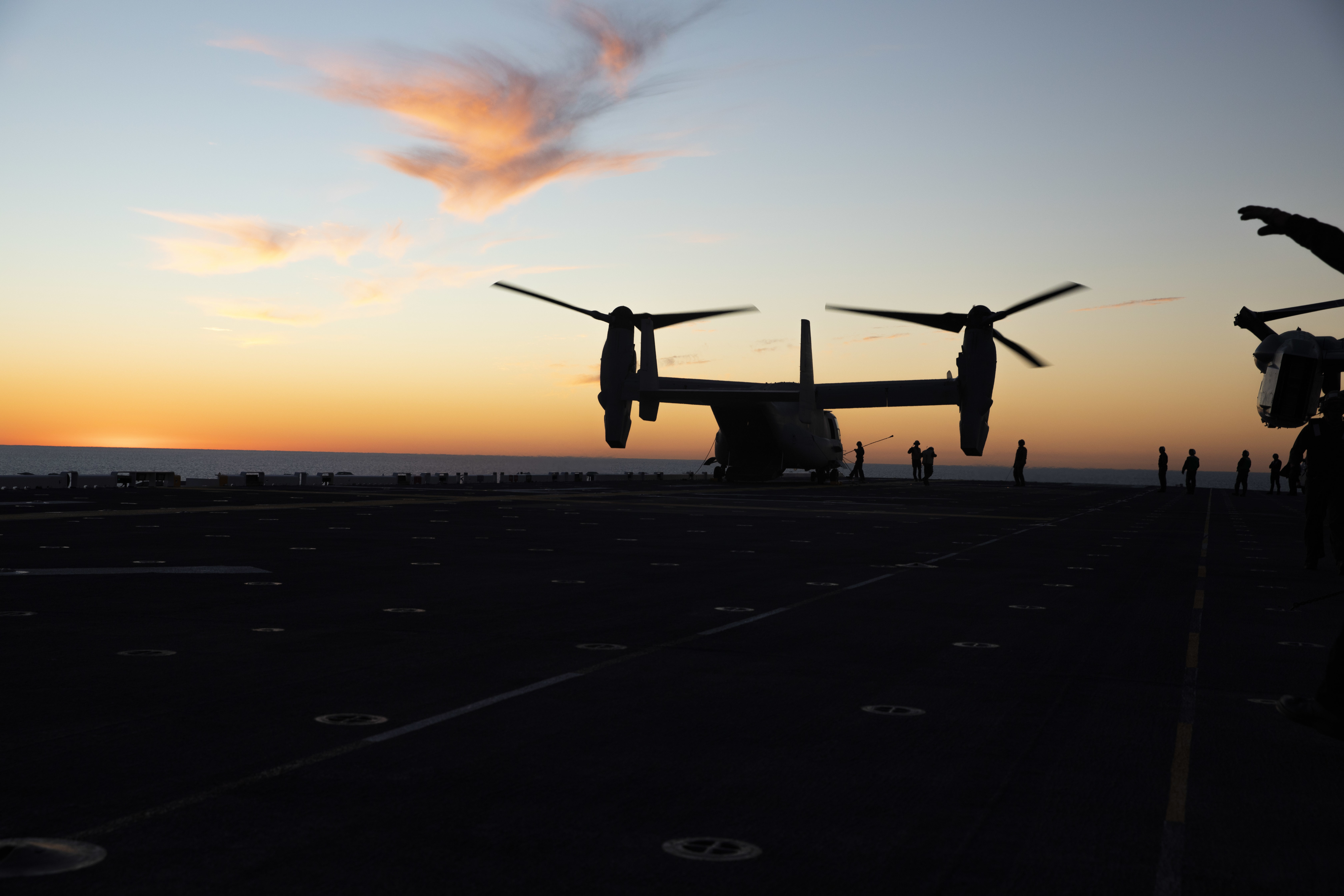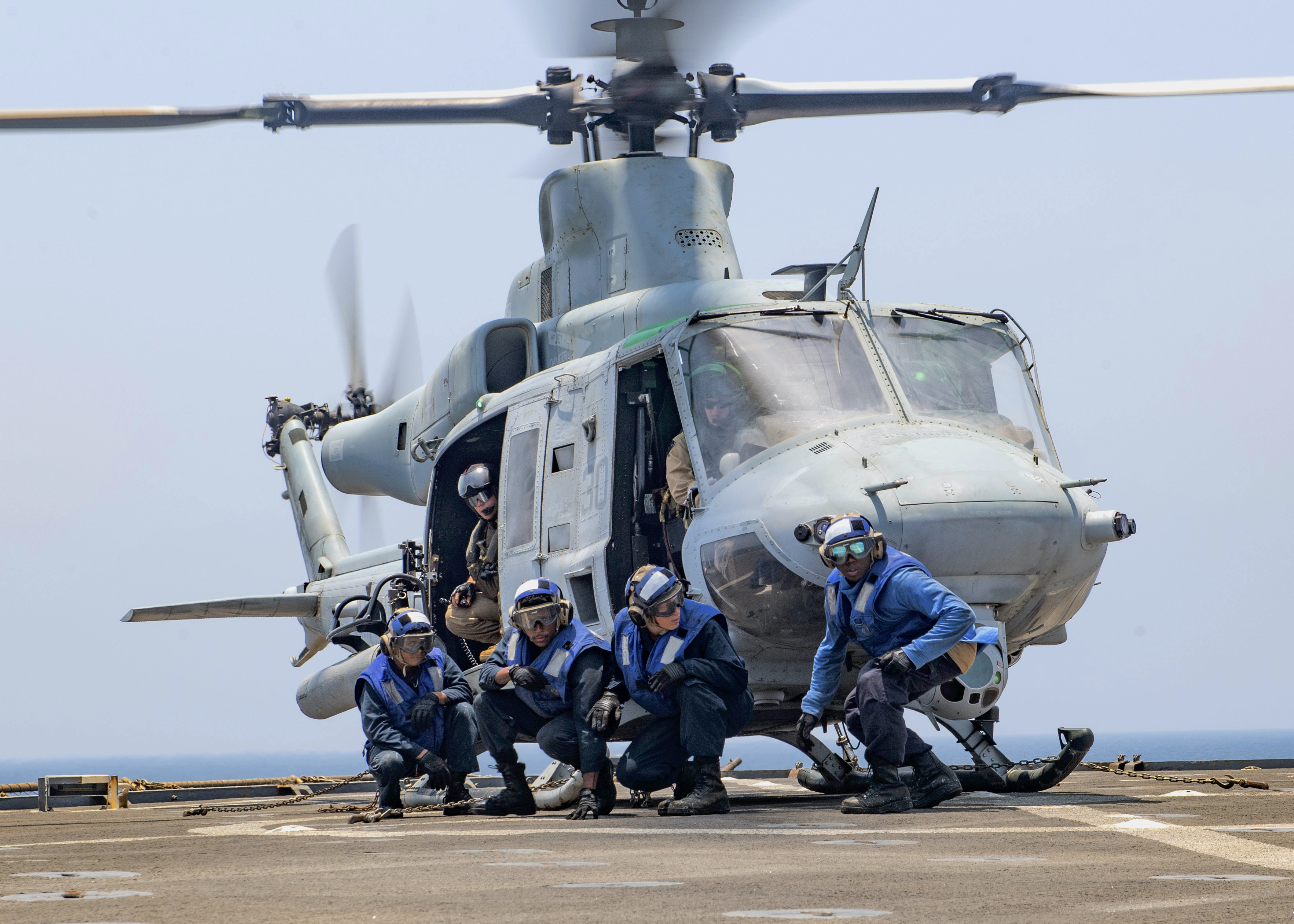
The Marine Corps have landed on a family-of-systems approach to developing its next rotary-wing fleet, as it refines requirements for its Future Vertical Lift program, service officials said on Wednesday.
After Marine Corps Commandant Gen. David Berger issued his Commandant’s Planning Guidance in 2019, the service began reassessing its needs for Future Vertical Lift. Now, the Marine Corps is focused more on replacing capabilities rather than platforms, according to assistant deputy commandant for aviation Brig. Gen. Matt Mowery.
“Instead of thinking about strictly platform replacements, more of a capability requirement. So over the last two years we’ve really done a lot of analysis and reflection and coordination with the other services to really think about where are we going and what is the requirement that we need. So this may be the first time we’ve used this term outside of the Pentagon, but we’re not really talking [Attack Utility Replacement Aircraft] anymore. We’re talking VTOL family of systems,” Mowery said today at the National Defense Industrial Association’s annual Expeditionary Warfare Conference.
“Looking at everything that we think is going to need to take off or land vertically and operate beyond 2030. So vertical take-off and landing, or VTOL family of systems – because what it does is it creates more of an umbrella program that things like a future [UH-1Y Venom] replacement, although again getting those capabilities once those platforms are end of life – but it also encompasses things like large unmanned logistics system airborne,” he added. “As we look at the distances that we’ve got to cover out in the Pacific, you know to have something unmanned that can do very repetitive work, risk-worthy, but over long distances and at an airspeed that’ll make a difference on the battlefield, that may be actually a priority for us over an H-1 replacement.”
Mowery noted that the Marine Corps is still taking delivery of the final H-1s it purchased, so the service is more focused on what technologies it will need to invest in for the future.

“And we think a great place to start maybe this large unmanned logistics system airborne, maybe MUX/MALE next and then you start looking at H-1 and MV-22 next. You know all those things I think are going to share a whole lot of similarities and technology,” he said, referring to the Marine Air-Ground Task Force (MAGTF) Unmanned Aerial System (UAS) Expeditionary program, also known as MUX, and the medium-altitude long-endurance system (MALE) that the Marines want to develop.
After Berger issued the CPG, the Marine Corps scrapped the MUX effort to build a large Group 5 unmanned aerial vehicle that could operate off of the Navy’s amphibious ships to perform various missions. Meeting the numerous requirements with one air vehicle at an appropriate cost was no longer feasible, so the Marines shifted to a family of systems approach for MUX. In the meantime, the Marines have been operating and experimenting with the MQ-9A Reaper drones, which the service has previously described as the first UAS to fit under the MUX family of systems. The Marine Corps plans to use lessons learned from operating the Reapers to help develop MUX.
A long-range unmanned platform for the Marines would likely fit under the VTOL family of systems, Mowery said, and the service will flesh out this idea in a forthcoming Marine Corps aviation plan this year.
The Navy also wants a family of systems approach for its Future Vertical Lift maritime strike capability, which is expected to include both manned and unmanned aircraft, USNI News previously reported.
While the requirements for both the Marine Corps and Navy capabilities are still under discussion, the Navy’s mission needs have lined up with some Marine Corps missions like fleet logistics and the overall Distributed Maritime Operations (DMO) concept, said Rear Adm. Shane Gahagan, the program executive officer for tactical aircraft programs,
“Can we get as many requirements that are common as possible across the forces and then the more you can be common, obviously the part supply gets better across the broad,” Gahagan said during a question and answer session with reporters. “But as was mentioned, the requirements are the key and where we have to diverge based on requirements is still being discussed, but I think going in that’s the plan with the Future Vertical Lift – a common site pictures on requirements and deviate only when we have to bring down costs of supporting and sustaining.”
The Navy and Marine Corps’ respective efforts to develop new rotary capabilities are housed under the same program office, but the services could have different requirements. The Navy likely needs helicopters that can operate off its destroyers and frigates more than the Marines.
“Now, within that common PMA it doesn’t necessarily mean we’re buying the same systems. Doesn’t mean we’re not going to buy some of the same, but it certainly doesn’t tie us to that. What it does though is it allows for some real collaboration, right,” Mowery told reporters after the event. “The Navy, as they look to replace their [MH-]60, they may decide that they need to make a requirement that it needs to fit in a certain footprint, right, like maybe the back of a DDG, for example. Well, the Marine Corps doesn’t necessarily have that same requirement.”
Despite the services still developing the requirements, the shared program office enables “synchronization” between the Navy and Marine Corps, Mowery said, adding that the platforms and systems will likely use the same technology, networks and software.
“What we’re finding right now is that the technologies that both of us are going to need to be able to, you know, again – take off and land vertically, go farther than the [MH-]60 and an H-1, go faster – there’s a lot of shared technology that we’re going to see there. And those aircraft and those platforms are going to have to operate in the same battlespace. So we’re going to have to be connected to the same network. We’re probably going to be able to share a lot of the software and the boxes and the things that are going to enable those capabilities. So again, short answer, we’re – if we’re not tied at the hip, we’re working through the same channels.”
During an earlier panel at the conference, deputy commandant for combat development and integration Lt. Gen. Karsten Heckl said the Navy and Marine Corps’ tilt rotor aircraft are important to the mission in the Indo-Pacific and pointed to the use of the MV-22 and CMV-22 in the region. But Heckl said the services have not made any progress on Future Vertical Lift.
“Future Vertical Lift is something we’re still talking about. Unfortunately, my very humble opinion is having been at the start of this back in 2014, we’ve made no headway,” Heckl said. “So it’s something that we’re trying to pressurize and energize to get moving. But that’s a big one.”





